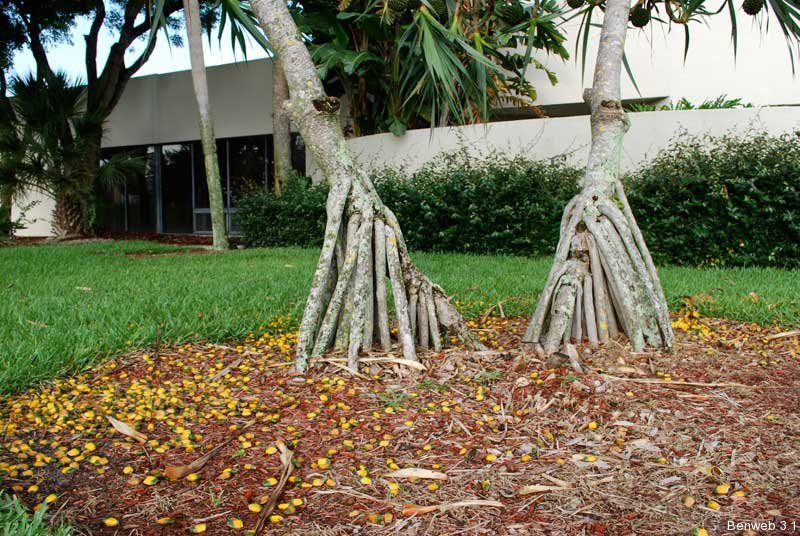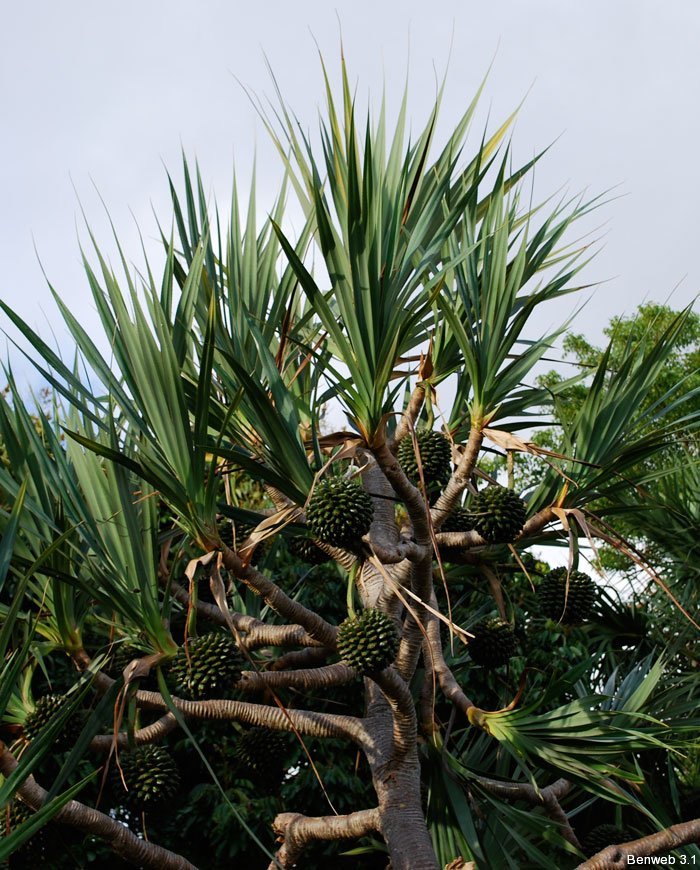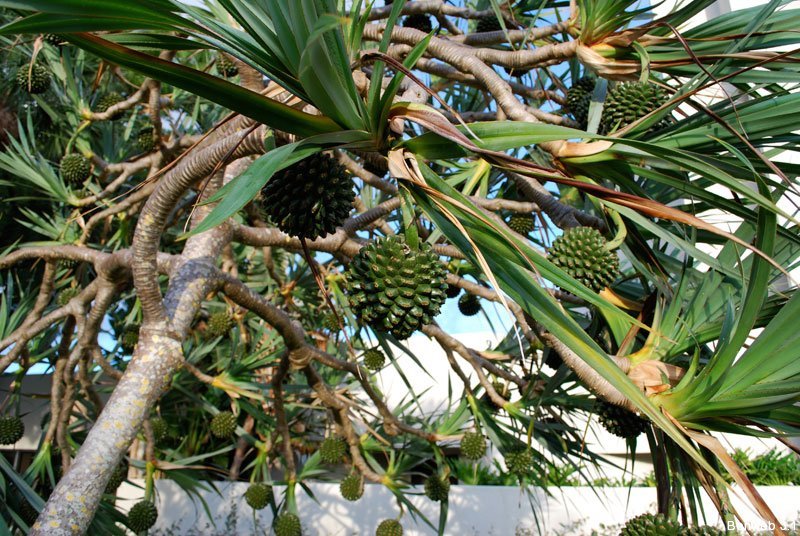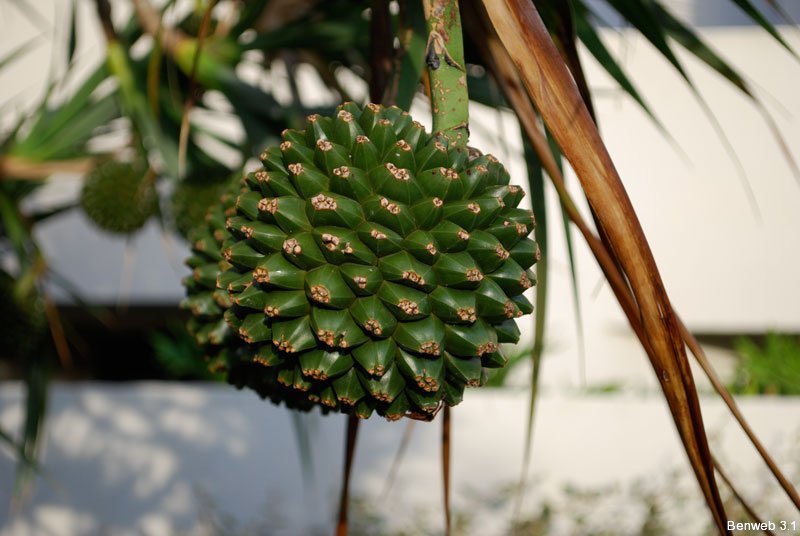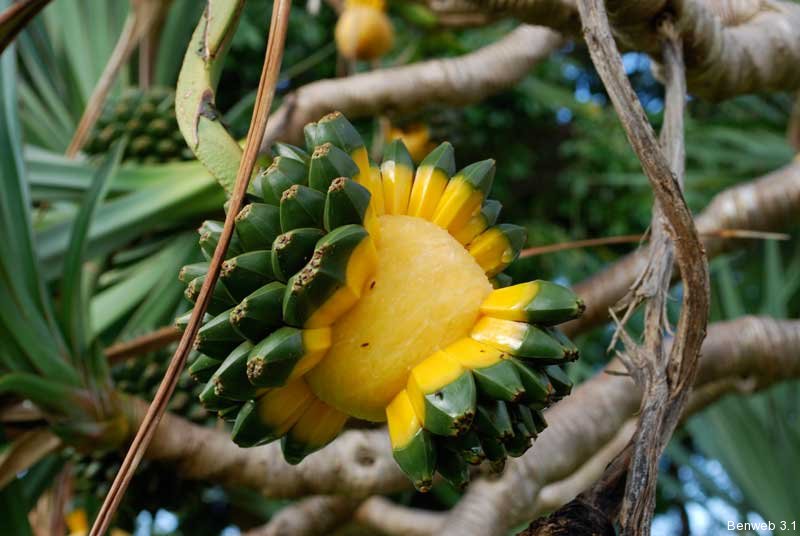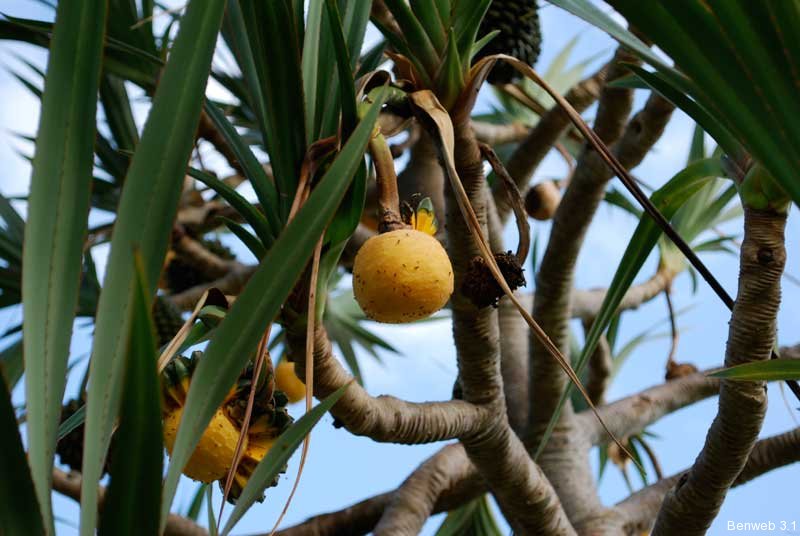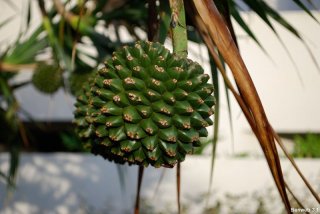About a year after we redid the landscape at our house, Florida native style, the landscaper we worked with sent Eric the classic book on environmental thinking for the young: Dr. Seuss’s The Lorax. You remember it, I’m sure: truffula trees, brown bar-ba-loots, swomee-swans, all cavorting in a pre-development paradise.
Well, one of the things I’ve always sort of enjoyed about south Florida is how Seussian the landscape is. Even more than southern California with its joshua trees (although those are native), the flora here in Florida seems to have come straight from the pages of Dr. Seuss.
Just one simple example: Every weekend morning we take the baby buggy by the synagogue around the corner from the house, and we pass by this tree:
It’s a Screw Pine, Pandanus utilis. Like some of the other non-native “pines” in Florida (think Australian pine, Casuarina equisetifolia), the Screw Pine is not really a pine at all. Like Australian pine, Screw pine is not even a conifer; it’s an angiosperm.
Our native pines, Slash (Pinus elliotti var. densa), Longleaf (Pinus palustris), etc., are true pines, that is, conifers in the genus Pinus, which, according to Wikipedia (that most unreliable bastion of knowledge), numbers between 105 and 125 species. Compare that to the more than 600 species of screw pine alone, and you see how exclusive membership in the true pine family is…
But one of the amazing things about the Screw Pine, the thing that really strikes you, and that struck me this morning so much that it prompted me to take pictures, is that it has pineapples:
Well, they’re not exactly pineapples, which also come from South America, but they are reported to be edible, at least according to that website I just linked to, and Captain Awesome, whom we met this morning on our stroll. We don’t really know his name, but he reminds us of one of the characters on our favorite TV show, a really genuinely nice guy, almost overwhelmingly so. (No, we don’t actually have television in our house, but we do have Netflix and a digital projector.)
Anyhow, this guy riding by on his bike saw me taking pictures of the screw pine this morning, and asked if I knew what kind of tree it was. When I declined its particular acquaintance, he cheerfully told me that it was a screw pine, a Casuarina species in fact, and that its fruit was edible. When I told him that Casuarina was actually the genus of the Australian pine, he quickly agreed that perhaps he didn’t have the taxonomy correct, but that it was most definitely a screw pine, and I should just Google it to get more exact information. Which was actually quite handsome of him; I’ve met lots of people who stick to their guns when mistaken, and it’s not pretty. I was also glad for Captain Awesome’s intervention this morning, because it was one of the few times I’ve been accosted on the street in Boca by anyone at all, and he turned out to be offering information in a completely open-handed and nice manner. I suspect that having the wife and baby stroller with me made me that much more approachable…
In any event, the screw pine’s pineapples are pretty amazing. It’s interesting that we have two imported pineapple trees here in south Florida (the screw pine and the true pineapple), because the pineapple is actually a bromeliad, and we have dozens of (well, 16 actually) native bromeliad species here in Florida. In fact, one of my next projects is going to be learning to sort through the bromeliads, at least in rudimentary fashion, much as I managed to learn my way (slightly) around our ferns.
But the screw pine, unlike the pineapple, is not a bromeliad. Nevertheless, it is such a fabulous tree, such a truffulous tree, such a tuftulous truffulus tree, that I really do wonder whether the good doctor, Ted Geisel, ever spent a morning or more strolling around south Florida…
I don’t know whether Dr. Seuss wrote any books on invasive exotic plants like the Australian Pine; the Screw Pine, so far as I know, behaves itself quite nicely. It stays where it’s planted and doesn’t try to take over the neighborhood. Not like those darn iguanas…
Related Images:
no images were found

